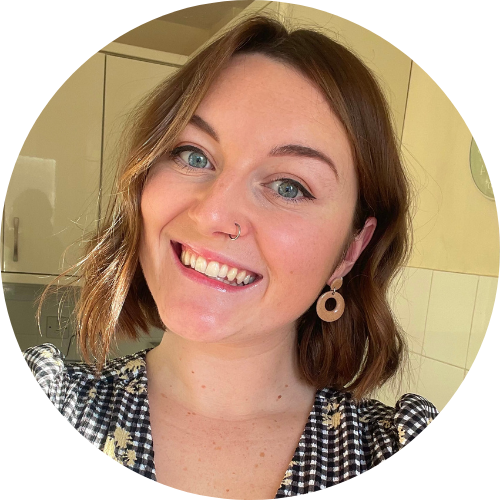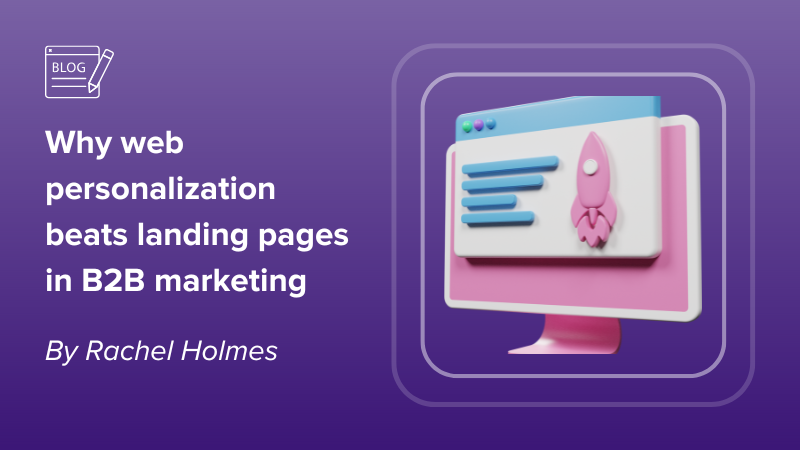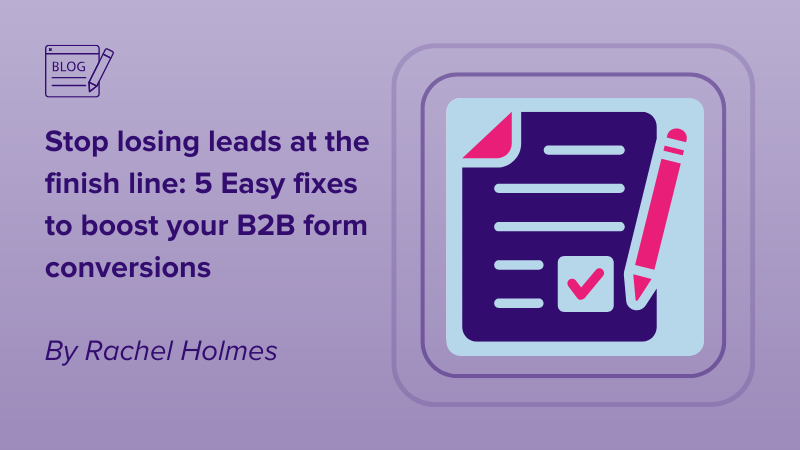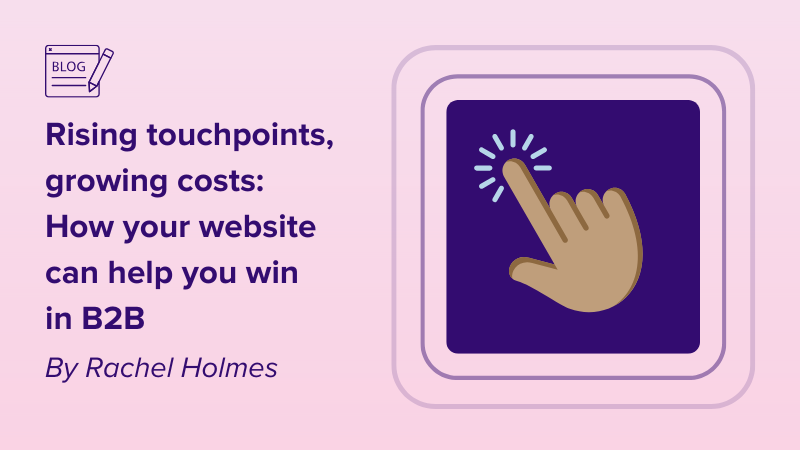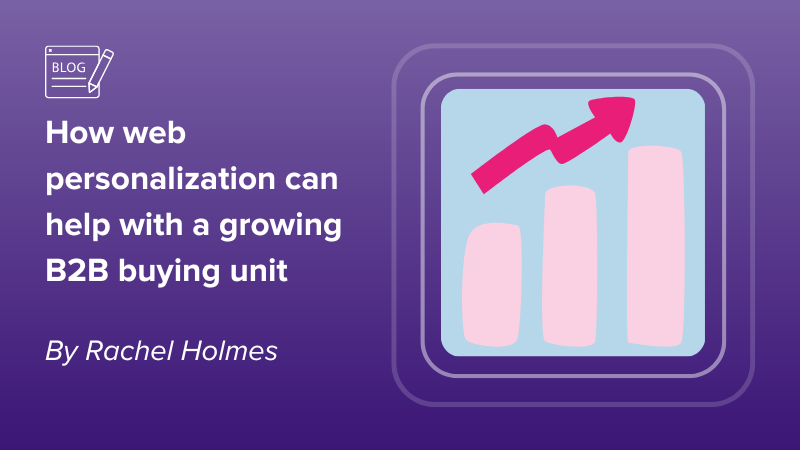Conversations around conversion rate optimization (CRO) often focus on the structural, visual and navigational changes a business can make to their website to increase conversion. Whilst your UX is an important factor, it is only one piece of the puzzle…
In a recent episode of the B2B Conversion Podcast, Webeo’s CEO, Kirsty Dawe, was joined by conversion copywriting expert and Head of Strategy and Copy at Cape Agency, Eden Bidani. In the episode, they looked at CRO from a creative perspective. They discussed why copywriting is a fundamental step when considering CRO and explained how to use psychology and a deep understanding of your customers’ buying journey to create copy that will deliver more conversions.
What do we mean by conversion copywriting?
When we talk about conversion copywriting, we refer to the process of using written language to encourage your prospects to take a desired action. Chances are you encounter different expressions of conversion copywriting everyday and whilst you might not even notice or think about it, those words have been considered, researched and tested to communicate with you in the most effective way.
Put simply, Eden described copywriting as a form of communication. “All of marketing comes down to one thing, trying to bridge the gap in communication between what you have to sell, and what the reader is looking for or what is important to them.”
Whilst most forms of CRO are visual, focusing on structural and navigational changes to optimize a user’s physical journey on the website, Kirsty shared in a recent episode of the B2B Conversion Podcast that pretty much every conversion expert she’d spoken to says the power is in the copy. Thankfully for us, copywriting can make a big impact on your CRO without draining too much time or expense. Let’s get into it…
Your customer should always be the center
Like many disciplines in marketing and CRO, conversion copywriting starts with the customer. How can you effectively communicate with your customer if you don’t know who they are? Understand what they feel, think, and do at different stages of their buying journey.
Eden explained that starting with a thorough research phase is key. She shared the 3 steps she takes:
1. Internal interviews, also known as the ‘company’.
Speak with stakeholders in different teams across the organization to build a well-rounded view of the company, how they want to be perceived, and what for.
2. Voice of existing customer research, also known as the ‘customer’.
Speaking with existing customers provides invaluable insights into who they are, what their objectives are and how they perceive the organization. You can use these findings to build out your copy and content. Did a customer use a specific word or describe a benefit when speaking about your product or organization? Use it. Use it on your website, in sales packs and just about anywhere a future customer could see and relate to it.
Tip: When conducting voice of existing customer research, try to recruit someone from your team or an external agency that doesn’t have regular dealings with the customer. Ensure you’re getting honest and frank insights from them.
3. Competitor research, also known as the ‘competition’.
Who else is in your market, how are they communicating with their prospects and customers? Is there anything you can learn or do differently from them?
Do you recognize the steps in this research phase? The Three C’s framework is often used when an organization is forming their marketing strategy. It helps create a position in the market that is considerate of what the company can deliver, what the customer needs and what is different to, or better than, the competition.
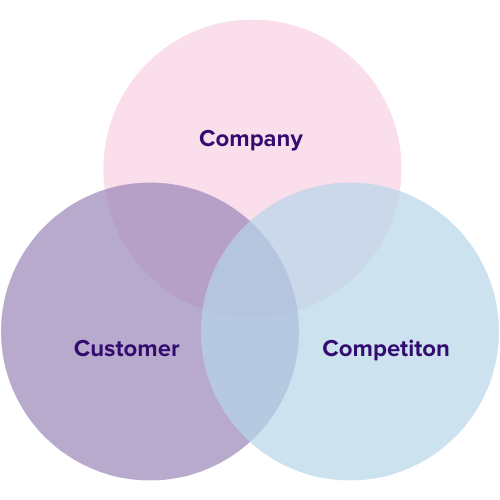

Democratizing your customers’ journey
Copywriting plays an important role in democratizing your customers’ journey. Users will access and navigate your website differently, and they will also be at different stages of your purchase funnel. Some will be visiting for the first time to get a sense of what you do. Some will be existing customers looking for something specific relating to your product or service.
Eden explained that “copy provides a free user experience for visitors to learn at their own pace, and helps people make their own decisions while on their way to conversion”.
To learn more about how you can personalize the copy and content on your website based on who your visitor is and what their behaviors and desired actions are, book a free demo with our sales team today.
Conversion copywriting quick wins
Okay so you’re feeling inspired and want to make some changes to your website. Before proceeding, what do you want to do? Identify low hanging fruit you can quickly update and test for conversion uplift, or, start a longer term project to review and implement copy changes across your entire website? Whichever one best suits your objectives, we’ve provided a few tips to help…
- Speak to your customers. This is always the most important step. Go back to Eden’s 3-part research phase but if you do nothing else, speak to a handful of customers. Your copy and conversion rate will thank you for it.
- If you can, use the language your customers actually use. This will ensure your website copy is authentic and speaks to the problems your visitors have, that your product or service has solved.
- Keep it simple, write how you talk. Eden explained that users can only process so much information at any one time. Avoid cramming all of your product features or benefits into one headline. Keep the copy tight and relative to the visitor and their needs.
- Pair 2 and 3 with social proof and you’re winning. Customer testimonials and social proof help to build trust between the organization and the customer. Research has found that a sales page sells 34% more when it has testimonials.
- Democratize your customer’s journey – the internet is a self serving place. Users want to get information at a pace that suits them. Eden shared that your copy should be “answering the questions your visitor is having in their head as they’re reaching each point of the website” and that “good copy feels intuitive and is embedded in the user experience”.
- Test, test, test. You won’t know if you’re reaching the full potential of your website without testing and tracking your performance. Remember that you should avoid changing too many variables at once. You might lose sight of what caused any positive or negative impacts. Start small, keep an eye on your metrics and keep testing.
The B2B Conversion Podcast is a monthly podcast for B2B marketers wanting to learn about CRO and drive more revenue from their website. Check out more episodes here.

